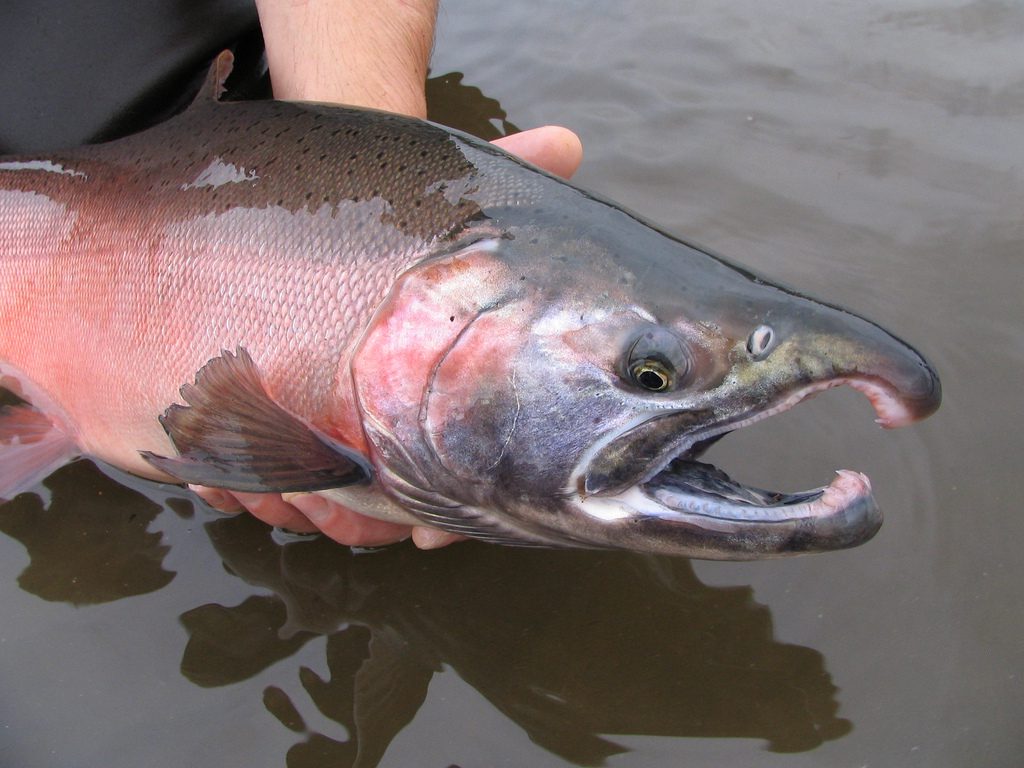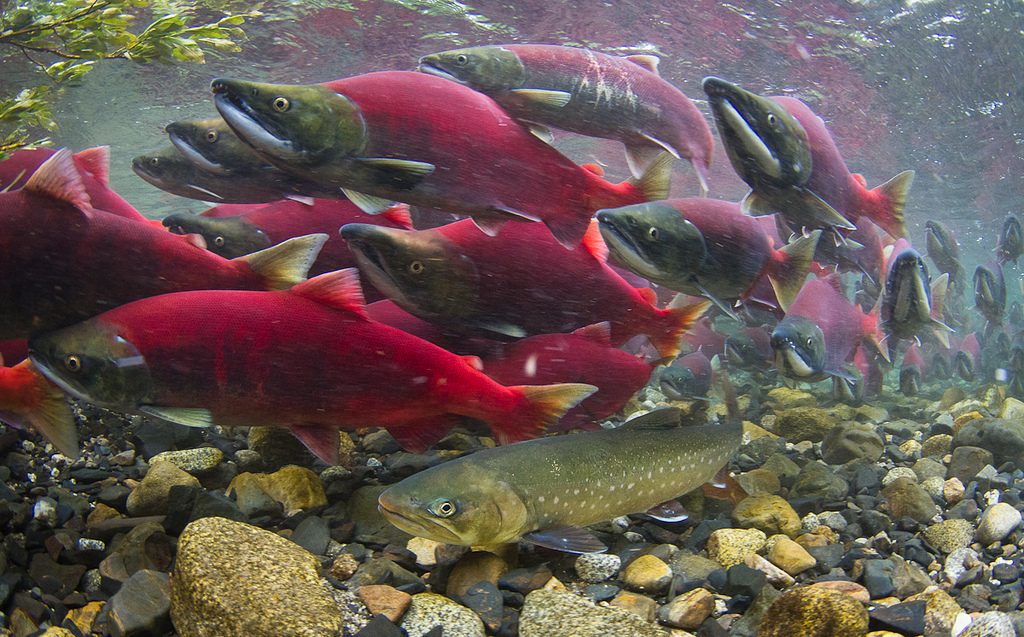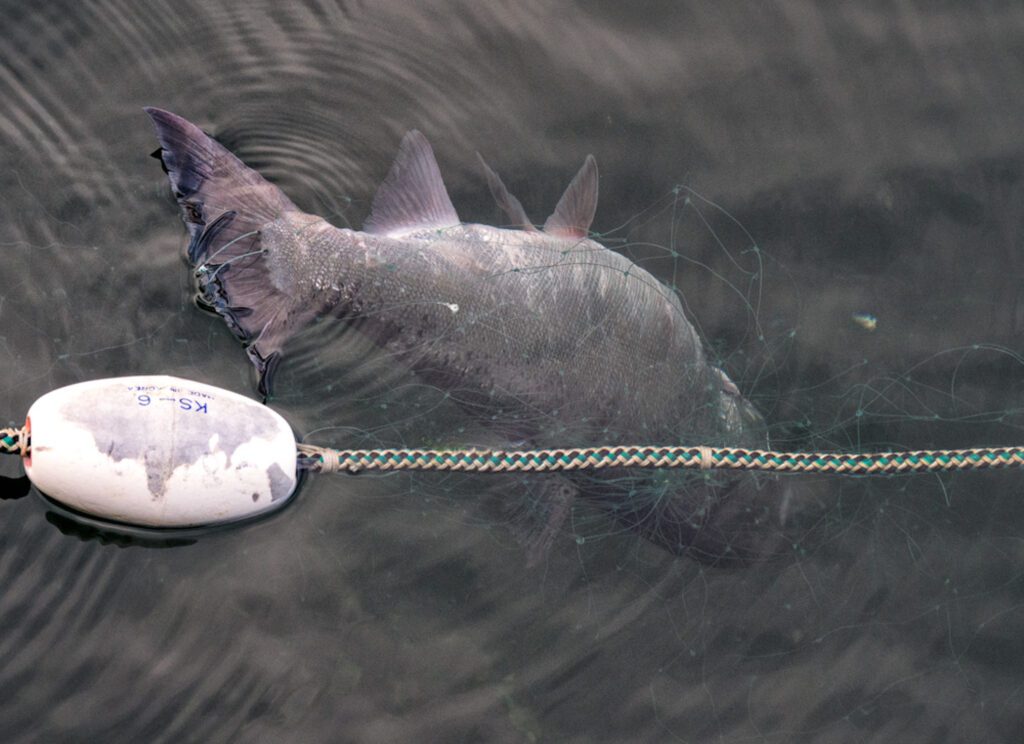Yukon salmon managers anticipated an early season for both Chinook and chum, but now, both runs are looking closer to average – that’s why they say most communities along the Yukon currently have empty fish racks.
At the weekly salmon teleconference on June 15, fishermen and managers shared reports and updates on Yukon River restrictions. With another weak Chinook run projected this year, management has been conservative. Marvin in Kotlik says restrictions near his home along the mouth of the Yukon have led many people to leave for easier fishing in Point Romanof.
“Dip-netting is just a very inefficient way to subsist for the salmon we need. We need like 200-250 chum to feed a couple of families here—myself and my boys, my elderly parents and our relatives,” said Marvin.
Marvin and others down river reported that dip-net fishing was not meeting their subsistence needs. It requires more trips out – and therefore more gas – to catch the needed amount of food. Eric in St. Mary’s says for several days he’s been dip-netting with his family, but they’ve barely caught anything and he says it’s discouraging.
“We’re seeing a demise in the subsistence life and culture out here, and of all the years of watching, right now is probably the scariest year I’ve seen out here for subsistence. A majority of these fish racks are empty. We’re at the 16th of June. For the lower river, that’s very unusual,” said Eric.
Many callers along the river requested that managers consider a gillnet opening.
But Stephanie Schmidt, summer season manager for the Yukon for Alaska’s Department of Fish & Game, said the numbers show the fish are on their way.
“Fishing has been very slow on the front end of this summer chum salmon run. We’ve heard that in every single area that it’s been very slow and people are using up a lot of gas to only catch a couple of fish. All I can say is that there are some summer chum on the way and when they get into larger numbers, efficiency will increase,” she said.
Schmidt says as of June 15, only about a quarter of the expected Chinook and chum have passed the sonar counting project at Pilot Station. That means both species are still early in their run – and there should be plenty of summer chum (between 1.8 and 2.4 million) to meet subsistence needs.
In the meantime, restrictions and closures are being enforced to protect the recovering kings.
U.S. Fish & Wildlife officer Brad Honerlaw thanked each community between Alukunuk and Grayling, where he’s been patrolling for the last two weeks. While everyone voiced their desire to fish—Honerlaw says he appreciates that all nets have been in compliance with the regulations.
Schmidt says it’s been a difficult start to the season, but they expected it.
“The closures are difficult, the gear restrictions are difficult. We know that the dip nets are not as efficient, and I know it’s tough for folks right now, and I guess I just want to say thanks to everyone for your compliance. That goes a long way to helping, in particular, this king salmon run rebound in future years, so thank you,” said Schmidt.
Meanwhile, the Yukon River summer chum tagging project is entering its second year. Researchers hope to estimate drainage-wide escapement and study run time and distributions by tagging 1,200 fish throughout the season.
The first batch of tagged fish just left Russian Mission on Sunday, so people should keep their eyes peeled for fish with white tags on their dorsal fin and an antenna sticking out of their mouth.
The Alaska Department of Fish and Game is asking that all tags be returned with a description of where the fish was caught and with what gear. Anyone who returns a tag will be entered to win up to $500.
This study is funded through the Alaska Sustainable Salmon Fund, and videos and information about the project will be posted on their website.







